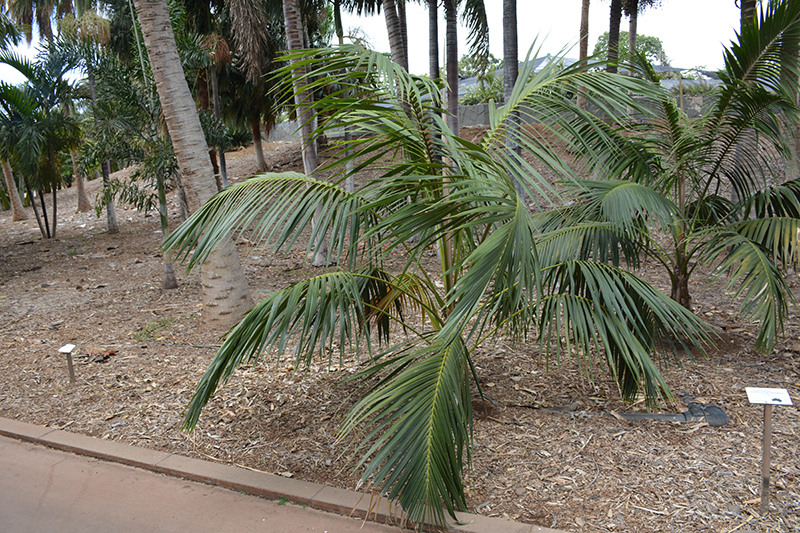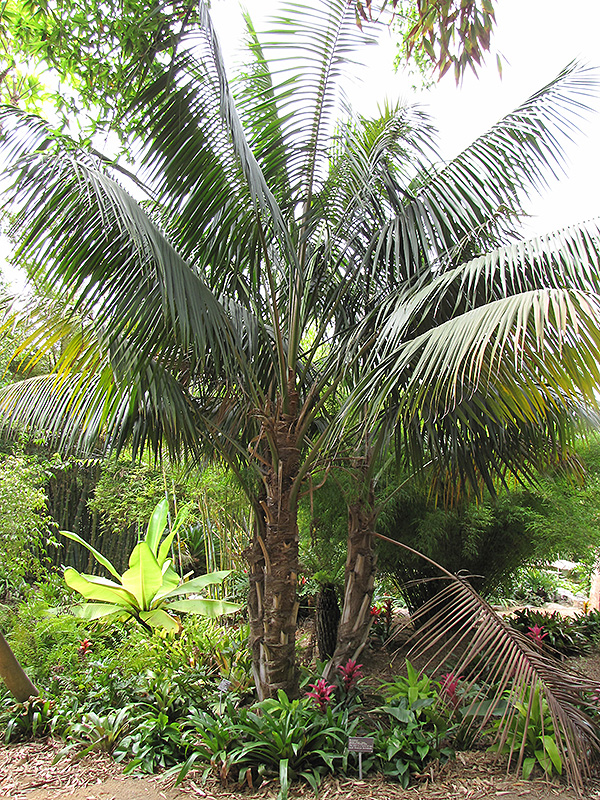Height: 12 feet Spread: 5 feet
Sunlight:
Other Names: Thatch Palm, Paradise Palm, Sentry Palm Description: An elegant palm that is relatively slow-growing with a slender trunk and graceful, arching, dark green fronds; a solitary trunk variety that can be grouped together for effect; a popular houseplant variety that looks stunning in a bright space Features & Attributes Kentia Palm is primarily valued in the home for its canopy of attractive foliage which towers high above the ground. Its attractive large narrow pinnately compound leaves remain dark green in color throughout the year. The dark green stems can be quite attractive and add to the plant's interest. This is an evergreen houseplant with a strong central leader and a towering form with a high canopy of foliage concentrated at the top of the plant. This plant may benefit from an occasional pruning to look its best. Planting & Growing When grown indoors, Kentia Palm can be expected to grow to be about 12 feet tall at maturity, with a spread of 5 feet. It grows at a slow rate, and under ideal conditions can be expected to live for approximately 40 years. This houseplant will do well in a location that gets either direct or indirect sunlight, although it will usually require a more brightly-lit environment than what artificial indoor lighting alone can provide. It is very adaptable to both dry and moist soil, but will not tolerate any standing water. The surface of the soil shouldn't be allowed to dry out completely, and so you should expect to water this plant once and possibly even twice each week. Be aware that your particular watering schedule may vary depending on its location in the room, the pot size, plant size and other conditions; if in doubt, ask one of our experts in the store for advice. It is not particular as to soil pH, but grows best in rich soil. Contact the store for specific recommendations on pre-mixed potting soil for this plant. There are many factors that will affect the ultimate height, spread and overall performance of a plant when grown indoors; among them, the size of the pot it's growing in, the amount of light it receives, watering frequency, the pruning regimen and repotting schedule. Use the information described here as a guideline only; individual performance can and will vary. Please contact the store to speak with one of our experts if you are interested in further details concerning recommendations on pot size, watering, pruning, repotting, etc. -- THIS IS A HOUSEPLANT AND IS NOT MEANT TO SURVIVE THE WINTER OUTDOORS IN OUR CLIMATE --![]()
![]()
![]()
![]()
![]()
![]()
![]()
![]()
![]()
![]()
![]()
![]()
Characteristics
Applications
Ornamental Features
This guide is an online resource representing many of the varieties that we carry over the course of the season, and is intended for informational purposes only. Inventory varies seasonally, so we cannot guarantee that every plant will be in stock at all times - please contact the store directly for current availability. It does not include our entire selection of plants, so be sure to visit our store to see varieties that may not be represented on this list.



